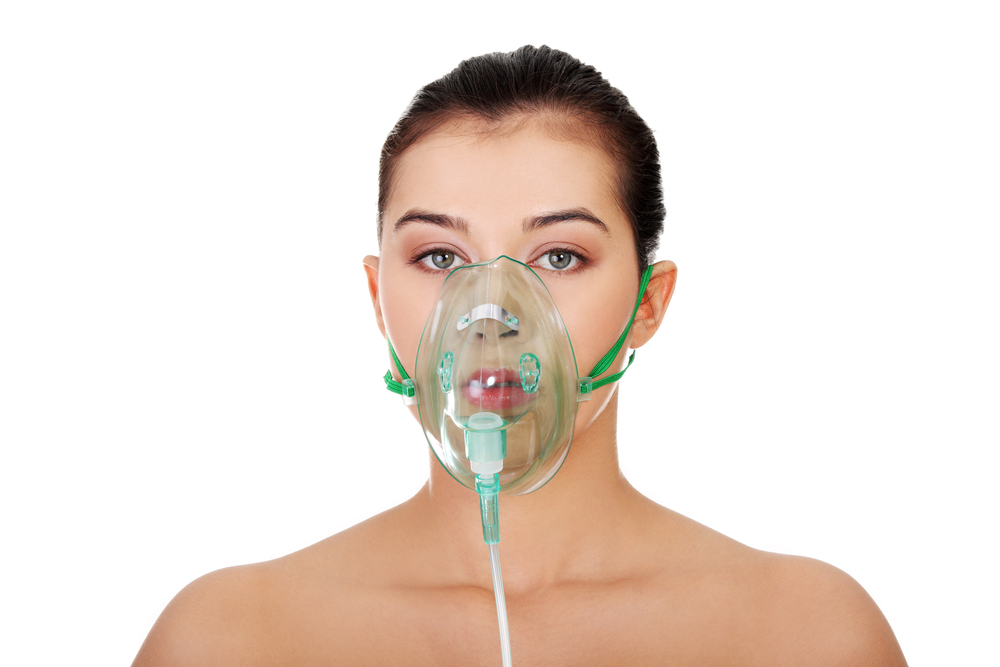 In the wake of COVID-19, the use of supplemental oxygen has become a concern for more than just the elderly or those with chronic illnesses. In fact, it is possible to say that there is a tendency to overuse oxygen therapy at home due to the fear of low O2 levels during a COVID infection. But whether we’re talking about COVID or any other respiratory illness, it’s important to understand when oxygen is actually needed and when it’s not. While many people believe that a feeling of breathlessness is a good indicator that you need oxygen, that’s not always the case. Keep reading to find out why, and what measurements you should actually be using to determine when supplemental oxygen is necessary—for yourself, or a loved one you care for.
In the wake of COVID-19, the use of supplemental oxygen has become a concern for more than just the elderly or those with chronic illnesses. In fact, it is possible to say that there is a tendency to overuse oxygen therapy at home due to the fear of low O2 levels during a COVID infection. But whether we’re talking about COVID or any other respiratory illness, it’s important to understand when oxygen is actually needed and when it’s not. While many people believe that a feeling of breathlessness is a good indicator that you need oxygen, that’s not always the case. Keep reading to find out why, and what measurements you should actually be using to determine when supplemental oxygen is necessary—for yourself, or a loved one you care for.
Shortness of Breath Is Not Oxygen Saturation
Supplemental oxygen helps to increase your blood-oxygen level, also known as oxygen saturation. But that saturation is not only impacted by your lungs’ ability to easily inhale and exhale. There are many factors aside from your respiratory system that can impact these levels, including cardiovascular health, medications you’re taking, level of conditioning, and so on. Therefore, it’s possible that you can be short of breath and not hypoxic (low on oxygen).
That feeling most people call being “out of breath” or “winded” is technically known as dyspnea, or air hunger, and it does not directly correlate with your oxygen saturation. For example, after a fast sprint, you’re likely going to feel that air hunger, but odds are that your oxygen saturation will actually be quite high due to how fast your heart is pumping and how deeply you’re breathing.
In some cases, using supplemental oxygen even when you are not hypoxic can feel like it’s working. However, this is usually due to a placebo effect rather than actually addressing any physical need for higher oxygen levels in the body.
You Can Be Hypoxic without Feeling Winded
It’s also incredibly important to note that the opposite can be true: you can feel completely fine, with no sign of that air hunger, and still be hypoxic. This was a bit less common in the past, and typically only caused by certain medications. (Just as some medications can make it difficult for your body to absorb certain nutrients, others can sometimes make it difficult for your body to achieve appropriate oxygen saturation, even if you’re breathing normally.)
However, hypoxia without dyspnea has become more common in the last couple of years. It’s a phenomenon seen fairly often in COVID patients, and a contributing factor in many COVID-related deaths; patients remained at home because they didn’t feel like they were struggling to breathe, but in reality, their oxygen saturation levels were dangerously, even fatally low.
While using supplemental oxygen when you’re short of breath and not hypoxic isn’t inherently dangerous, relying on shortness of breath alone as an indicator of your oxygen levels certainly is. For this reason, it’s incredibly important that those with respiratory illnesses find other means of measuring their needs for oxygen therapy.
So What Is a Good Indicator that You Need Oxygen?
If you can’t rely on your own body to clearly tell you when you need oxygen, what can you rely on? Ultimately, you’ll want to turn to medical instruments that accurately measure your oxygen saturation. Oximeters have become much more common and widely available due to COVID-19, and if you or a loved one suffers from a respiratory condition, it’s a good idea to have one of these on hand.
How often should you be measuring your oxygen saturation (or that of a loved one)? You don’t need a constant readout of these numbers. Rather, measure O2 levels during various stages of activity. Measure them at rest, when performing basic daily tasks, engaging in more strenuous activity, and so on. At first, you’ll probably want to measure more often; doing so can give you a basic understanding of how your O2 levels respond to different activities. Consider keeping a journal so you can note any patterns. Once you understand your body’s needs a bit better, you can measure less often, but always make sure to consult with your doctor on these matters first.
If you’re in need of oxygen therapy equipment for your COPD, PF, PH, long COVID, or any other chronic respiratory condition, reach out to us today. We can help you find the equipment you need and will help you work with your insurance to offset the cost.